#UX/UI design resources
Explore tagged Tumblr posts
Text
Boost Your UX/UI Skills with These Must-Use Resources
In today��s digital landscape, having a strong foundation in UX/UI design is essential for designers looking to create seamless and engaging user experiences. Whether you're a beginner or a seasoned professional, leveraging the right UI design resources and UX design resources can significantly improve your skills. This guide will help you discover the best tools, courses, and communities to take your design expertise to the next level.

Why UX/UI Resources Matter
Understanding the latest trends, methodologies, and best practices is crucial in the fast-evolving world of UX/UI design. By using high-quality UI design resources and UX design resources, you can stay ahead of industry trends, improve your workflow, and create user-friendly designs that enhance user satisfaction.
Top UI Design Resources for Beginners and Experts
1. Figma
Figma is one of the most powerful UI design resources, allowing designers to create, prototype, and collaborate in real time. It’s browser-based, making it accessible from any device.
2. Sketch
Sketch remains a favorite among UI designers due to its intuitive interface and strong prototyping capabilities. It’s a great tool for building user interfaces and wireframes.
3. Adobe XD
Adobe XD is a top-tier UI design resource that integrates well with other Adobe products. It’s perfect for designing and prototyping interactive experiences.
4. Canva
For beginners looking for an easy way to create UI designs, Canva provides a simple interface with pre-made templates for quick design projects.
5. InVision
InVision helps designers prototype and collaborate on UI designs. It’s widely used in UX/UI projects and supports seamless client feedback integration.
Best UX Design Resources for Enhancing User Experience
1. Nielsen Norman Group (NNG)
NNG provides research-based insights on UX design, making it one of the best UX design resources for professionals looking to improve their usability knowledge.
2. Smashing Magazine
A valuable online resource for UX designers, Smashing Magazine covers topics like accessibility, interaction design, and usability best practices.
3. UX Design Institute
This platform offers structured UX design courses that help designers gain industry-recognized certifications.
4. Interaction Design Foundation (IDF)
IDF provides affordable UX design courses, covering topics from user psychology to design thinking.
5. Google’s Material Design
Google’s Material Design guidelines are essential for anyone working on Android applications or looking for structured UI/UX principles.
Books Every UX/UI Designer Should Read
Reading expert insights can enhance your knowledge of UI/UX design. Here are some must-read books:
"Don’t Make Me Think" by Steve Krug – A classic that teaches usability principles in a straightforward manner.
"The Design of Everyday Things" by Don Norman – Covers the psychology behind good design.
"Lean UX" by Jeff Gothelf – Teaches agile UX design principles.
"Hooked" by Nir Eyal – Explores how to create habit-forming digital products.
Online UX/UI Communities and Forums
Engaging with UX/UI communities allows designers to share knowledge, seek advice, and stay updated with the latest trends.
Dribbble – A great place for UI designers to showcase their work and gain inspiration.
Behance – Adobe’s platform for sharing design portfolios.
Reddit UX Design – A forum for discussing UX/UI design concepts and trends.
UX Stack Exchange – A Q&A site for professional UX designers.
Free and Paid UX/UI Courses to Improve Your Skills
Free Courses
Google UX Design Certificate (Coursera) – Covers the fundamentals of UX design.
Udacity’s Free UX Design Course – Provides introductory lessons in UX design.
HubSpot Academy’s Free UX Course – Teaches UX principles for marketing and web design.
Paid Courses
Interaction Design Foundation (IDF) Courses – Affordable and well-structured.
General Assembly UX Design Bootcamp – A comprehensive bootcamp for serious learners.
Coursera UX/UI Specialization (by the University of Michigan) – Covers design thinking, prototyping, and research methods.
UX/UI Open:- Learn Online UX & UI Design Course | UX UI Open
Tools to Enhance Your UX/UI Workflow
Wireframing Tools
Balsamiq – Ideal for quick wireframing.
Axure RP – Advanced wireframing and prototyping.
Usability Testing Tools
Hotjar – Provides heatmaps and user feedback.
UserTesting – Offers real-time user testing services.
Collaboration Tools
Slack – Great for team communication.
Notion – Helps with project documentation.
Conclusion
Leveraging the right UX/UI design resources can significantly boost your career and help you create user-friendly designs. Whether you’re looking for tools, courses, or community support, these resources will ensure you stay ahead in the competitive world of UX/UI design. Start exploring today and elevate your design skills to new heights!
0 notes
Text
Above is a presentation about the leading e-commerce development company in India known as Woxro which is located at Koratty, Infopark, Thrissur, Kerala, India. Visit and get to known about the India's leading ecommerce service provider.
#ecommerce development agency#ecommerce development services#ecommerce website development#ecommerce#web developers#web development#web design#web resources#web graphics#ecommerce development company#ui ux design#ui ux company#business growth#online businesses#branding#startup#shopify#digital transformation#web hosting#website#purple#it services
2 notes
·
View notes
Text
Top SAP Migration Consulting Company
In the ever-evolving landscape of technology and business solutions, finding the right SAP consulting partner is pivotal for organizations seeking optimal efficiency and innovation. SAP, or Systems, Applications, and Products in Data Processing, has become the backbone of many enterprises, streamlining processes and enhancing overall performance. As businesses navigate the vast sea of SAP consulting companies, it’s crucial to identify the crème de la crème — the top SAP consulting company that stands head and shoulders above the rest.
Original Source - https://medium.com/@mobcoder/top-sap-migration-consulting-company-551ca1eecf66Q

#hire flutter developers in usa#it consulting service in india#mobile application development company in india#hire mern stack developers#ui/ux designing company usa#web app development company in usa#best mobile app consulting services#hire dedicated resources in india#hire dedicated flutter app developer#best ar app development company in india#SAP#SAP Migration#SAP Migration Services
2 notes
·
View notes
Text
Don't Just Live, Thryve!

Thryve is a prototype for an app I created that brings together numerous resources for transgender people. It includes information on terms commonly used in the LGBTQ+ community, details on acceptance lawfully and socially in your area, and information on socially and physically transitioning.
Try out the prototype here :)
#awkwardly enchanted#adobe xd#graphic design#logo design#trans artist#lgbtq#trans resources#ui ux design#awkwardlyenchantedllc#app design
0 notes
Text
Discord ios app UI - December 28th 2024.
Example of conversations between friends.


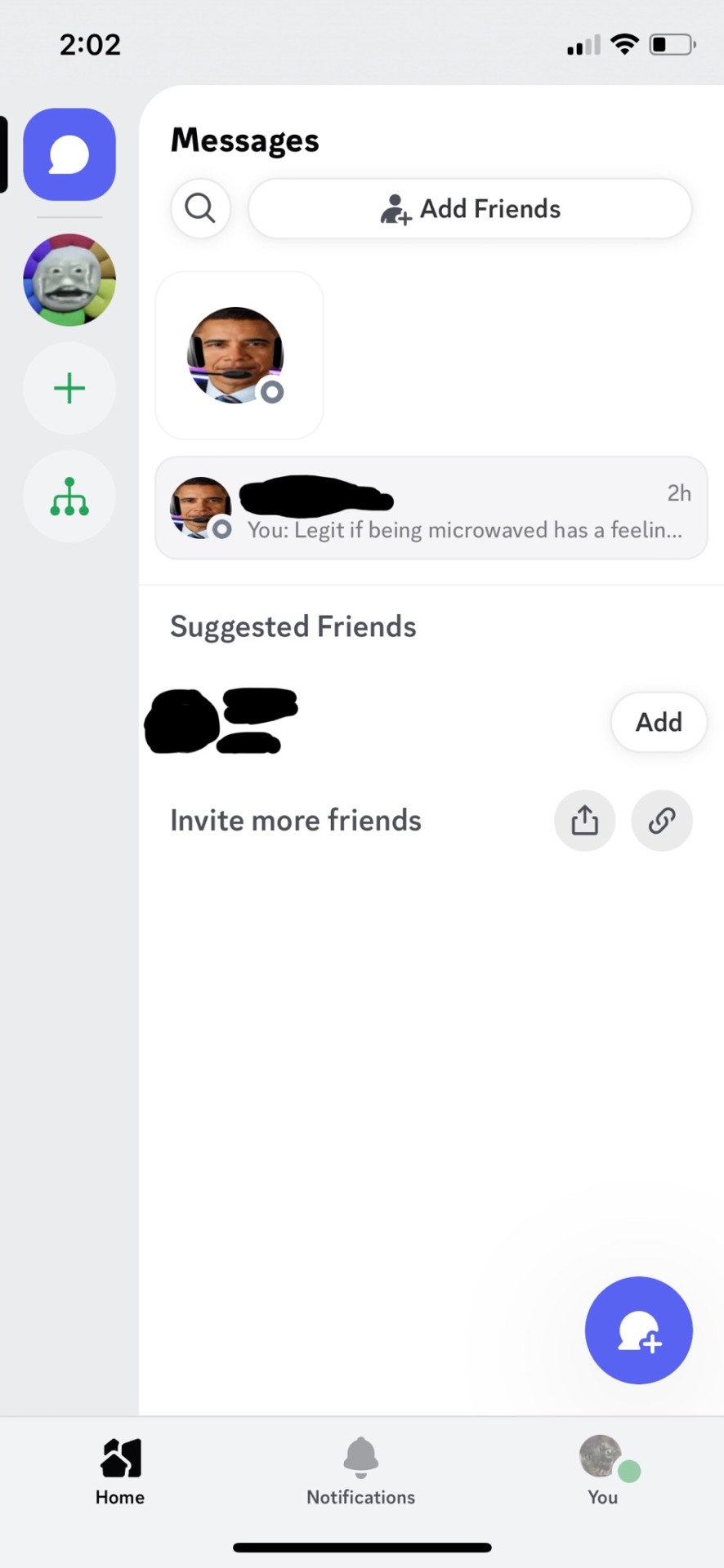

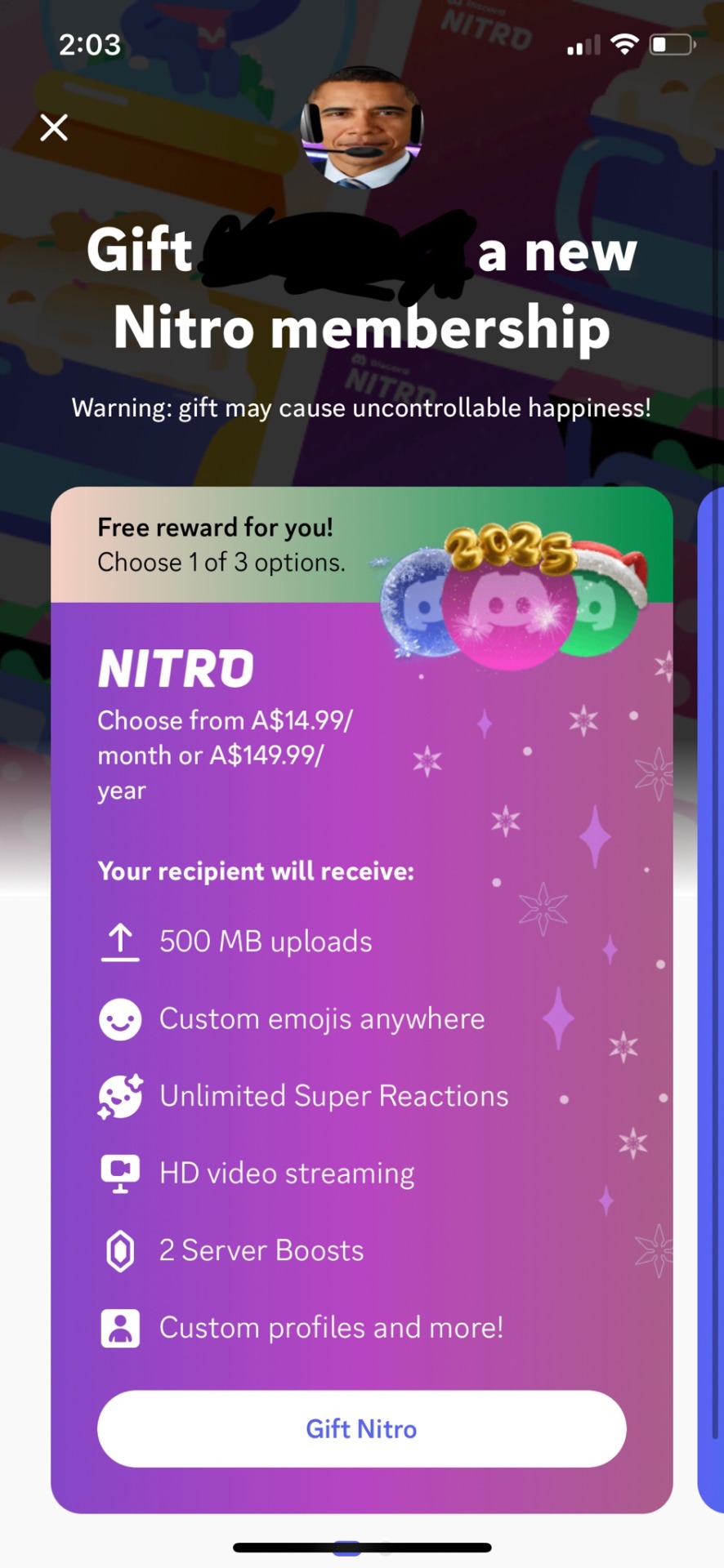

#ui#ux#designer examples#designer resources#graphic design examples#ads#ads archive#ui archive#archive
1 note
·
View note
Text
Metafic's Best Sketch Plugins: Essential Plugins for Every Designer
Examine how incorporating the best plugins for Sketch will boost overall efficiency and improve your UI/UX design projects. Take a look!
#sketch plugins#UI/UX Design Plugins#Sketch#Design Resources#Designer Productivity Plugins#Best Plugins for Sketch
0 notes
Text
0 notes
Text
Top 10 Website Design Tools
In the rapidly evolving landscape of digital design, staying ahead of the curve is essential for creating stunning websites. As we step into 2024, the world of website design has seen a surge in innovative tools that streamline the creation process and elevate the overall user experience. Here, we present the top 10 website design tools that are revolutionizing the industry in 2024. Top 10…

View On WordPress
#best web design software#collaborative design platforms#creative web design tools#digital design software#graphic design software#online web design tools#responsive web design tools#top design software for websites#ui/ux design tools#user interface design tools#web design resources#web design tools and software#website design tools 2024#website development tools#website prototyping tools
1 note
·
View note
Text
Mastering React Native Components and UI Development: A Comprehensive Guide
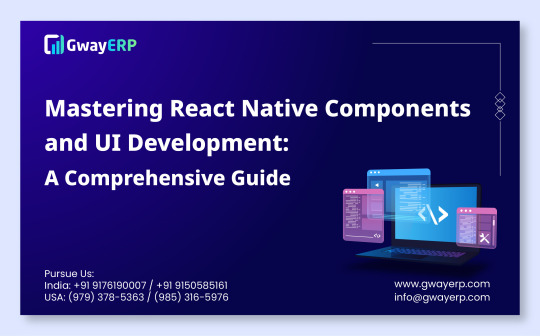
Introduction:
This thorough primer to React Native, a potent tool for creating cross-platform mobile applications, is yours to peruse at your leisure. The React Native environment will be covered in this blog article, along with its benefits and step-by-step directions for building your first Custom software application in React Native.
Facebook created the open-source React Native technology for mobile applications. It enables programmers to construct mobile apps for the iOS and Android platforms using JavaScript and React. Programmers can now construct mobile applications using the same code and guiding principles as React web applications thanks to React Native, an extension of the popular JavaScript toolkit React.
React Native has completely changed how we create cross-platform mobile applications by providing a streamlined JavaScript and React development environment. Every React Native app's components and user interface (UI) are what give the app its overall appearance and functionality. In this blog post, we will discuss recommended practices for UI development and delve into the world of React Native components. Whether you're a novice or a seasoned developer, this thorough manual will arm you with the skills necessary to design gorgeous and effective user experiences with React Native.
1. Components of React Native to Understand:
It's crucial to understand the concept of components if you want to create reliable applications with React Native. First, we'll go into great detail about components, including what they are, how they work, and the many types that are available in React Native.
2. Reusable Component Development:
As React Native enables you to effectively design large user interfaces by composing smaller, self-contained parts, creating reusable components is a crucial component of the development process. In this section, we will examine how to develop reusable components in React Native.
3. Identifying Reusable Elements:
The first step towards creating reusable components is to identify UI elements or functionalities that appear frequently throughout your app. From buttons and headers to cards and lists, recognizing these repeating elements will form the basis of your reusable components.
4. Setting Up the Component File:
Once you've identified the reusable element, create a new component file with a.js extension in your React Native project. Organizing components in separate files ensures a clean and structured codebase.
5. Importing Dependencies:
In the component file, begin by importing necessary dependencies, such as React and React Native components. These dependencies will be essential for building your reusable component.
6. Building the Reusable Component:
Depending on your requirements, create either a functional or class component. For simplicity, we will focus on functional components. Design the component with flexibility in mind, allowing it to accept props for customization and dynamic behavior.
7. Utilizing Props for Customization:
One of the key features of reusable components is their ability to adapt to various scenarios. Utilize props to pass data and event handlers to your component, making it customizable and interactive. This enables you to reuse the same component with different configurations throughout your app.
8. Exporting the Component:
To use the component in other parts of your app, export it using export default. Exporting the component allows you to import and render it wherever needed, promoting code reusability.
9. How to Use the Reusable Component:
Once the reusable component has been developed, import it into your app and use it within other components. This method provides uniformity throughout your application and streamlines the ERP development process.
10. Extension and Modification of Reusable Components:
You might need to change or expand the functionality of your reusable components as your program develops. Learn how to modify current components while maintaining backward compatibility to prevent needless refactoring.
Styling in React Native:
1. A Deep Dive into CSS and Flexbox:
Learn the art of styling in React Native using CSS-like properties and Flexbox layout. We'll cover the basics of styling components, handling responsive designs, and creating visually appealing user interfaces.
2. Handling User Input with React Native Components:
From buttons and text inputs to checkboxes and dropdowns, we'll explore various React Native components that handle user input. We'll discuss best practices for designing intuitive user interfaces and handling user interactions.
3. Building Complex UIs with Composing Components:
Combining simple components to create complex UIs is a crucial skill in React Native development. We'll dive into the technique of composing components to build sophisticated user interfaces with ease.
4. Navigation and React Navigation:
Seamless navigation is essential for a great user experience. We'll introduce React Navigation, a popular library for handling navigation in React Native apps, and explore different navigators and navigation patterns.
5. Styling Best Practices for Performance:
Optimizing your app's performance is crucial for ensuring a smooth user experience. We'll discuss performance-oriented styling techniques and tips to reduce rendering time and improve your app's responsiveness.
6. Handling State and Props in UI Components:
React Native components often rely on state and props to display dynamic data. We'll cover how to handle state and props effectively to ensure your UI updates efficiently and accurately.
Advanced UI Techniques: Animations and Gestures
Take your UI to the next level with animations and gestures. We'll delve into React Native's animation capabilities and explore touch gestures for creating interactive and engaging user interfaces.
1. Understanding Animations in React Native:
The user experience is greatly improved by animations, which give the software vitality and interactivity. We will explore the built-in animation capabilities provided by React Native, including the Animated API and Layout Animation, and understand the basics of creating smooth and fluid animations.
2. Creating Animated Components:
Learn how to animate various UI components, such as buttons, cards, and modals. We'll cover techniques like fade-in, slide-in, and scaling animations and how to orchestrate multiple animations together to build complex and engaging UI transitions.
3. React Native Gesture Responder System:
React Native provides a powerful gesture responder system that allows developers to handle touch gestures with ease. We'll delve into handling touch events, recognizing gestures like taps, swipes, and pinches, and implementing custom interactions.
4. Implementing Drag-and-Drop Functionality:
Drag-and-drop interactions are prevalent in modern apps, offering intuitive ways to manage content. We'll explore how to create drag-and-drop functionality using Pan Responder, enabling users to move and rearrange elements effortlessly.
5. Animated Transitions and Navigation:
Learn how to use animations to enhance navigation between screens. We'll explore custom transitions for stack navigators, tab navigators, and drawer navigators, providing users with visually appealing and seamless transitions.
6. Interpolations and Easing Functions:
Understand the concept of interpolations and easing functions to control the timing and behavior of animations. We'll cover how to use easing functions like linear, bounce, and elastic for smoother and more natural animations.
7. Advanced Animation Libraries in React Native:
Discover popular animation libraries, such as Lottie and React Native Reanimated, that offer extended capabilities for creating complex animations. We'll explore how these libraries can take your UI to the next level with their unique features.
8. Gesture-Based User Interaction:
Implement gesture-based interactions that respond to users' touch and motion. We'll cover use cases like swipe-to-delete, pinch-to-zoom, and swipeable cards, making your app feel intuitive and interactive.
9. Performance Optimization for Animations:
Optimize your animations for better performance and reduced battery consumption. We'll discuss techniques to minimize unnecessary re-renders, use component updates, and leverage the Animated API's features effectively.
Creating Custom Components and Libraries:
Learn how to create your own custom components and explore the process of creating and publishing reusable component libraries for the React Native community.
1. The Power of Custom Components:
Understand the importance of custom components in React Native development. In this section, we'll go over the benefits of developing custom components, such as how they ease the development process by streamlining the code and making it easier to manage, stay consistent with, and update.
2. Designing a Custom Component:
Learn the key considerations when designing custom components. From defining the component's purpose and functionalities to planning its props and state, we'll guide you through the essential steps to creating well-structured and versatile components.
3. Implementing Custom Components:
Dive into the implementation of custom components using both functional and class-based approaches. We'll explore the best practices for composing components, leveraging styles, and handling dynamic data to ensure your components are both efficient and reusable.
4. Prop Types and Default Props:
Explore React's prop types and default props system to ensure that your custom components maintain type safety and provide meaningful default values. We'll cover how to validate incoming props and set defaults for smoother component usage.
5. Building Custom Libraries:
Take your reusability to the next level by building custom libraries. We'll demonstrate how to extract and package your custom components into a reusable library that can be shared across multiple projects or even published to the npm registry.
6. Documenting Custom Components and Libraries:
Learn the importance of proper documentation in custom component development. We'll cover techniques for documenting your components' API, usage examples, and any specific considerations for developers who may use your library.
7. Versioning and Maintaining Custom Libraries:
Discover versioning strategies to manage updates and ensure backward compatibility in your custom libraries. We'll explore how to handle bug fixes, feature enhancements, and deprecations in a way that ensures smooth upgrades for consumers.
8. Participating in Open-Source Component Library Projects:
Investigate the world of open-source libraries and discover how you can help support ongoing initiatives. You will be better able to appreciate the advantages of contributing to the open-source community if you are familiar with GitHub, pull requests, and code reviews.
9. Testing Custom Components and Libraries:
Discuss the importance of testing in custom component development. We'll cover unit testing, integration testing, and snapshot testing to maintain the quality and reliability of your custom components and libraries.
Conclusion:
React Native components and UI development form the backbone of any mobile application. By mastering the art of creating reusable components, designing intuitive user interfaces, and leveraging advanced UI techniques, you can build powerful and visually appealing apps with ease. No matter what degree of programming experience you have, this session will equip you with the knowledge and abilities you need to advance your React Native app development. So, let's dive in and create stunning mobile experiences with React Native!
#softwaredevelopmentservices#resourceaugumentation#virtualoffshoredevelopmentcenter#outsourcedproductdevelopment#bespokesoftwaredevelopment#projectoutsourcingcompany#customizederp#resourceallocation#resources#gwayerp#uidesign#ui ux design#ux#design#dashboard#ui#custom software development#reactnative#reactjs#automation
1 note
·
View note
Note
Hi there, Love your work! I'm also doing stuff in Unreal and it feels like it's rarer to find other indie devs using it. I love how clean all your UI feels, and UI is something I seem to really struggle with.
Do you have any recommendations for workflows / tips / sources etc for getting better at UI?
Also I'd love to know more about the material / shader workflow for your latest post if you have more information anywhere.
Thanks :)
Hello there! Thank you!! I hope you don't mind me answering publicly as I feel like some people might be interested in the answer!
I really appreciate your UI (User Interface for those not knowing the acronym) compliment as it's something I've spent a long time working on and specializing in, in my career as a software engineer. UI/UX often goes completely unacknowledged or taken for granted even though it takes a lot of time and hard work to create and develop. In the engineering world I frequently had to advocate for and explain user experiences to those who didn't have as deep of an appreciation for UI or a very sophisticated understanding of why a good, visually appealing user experience makes, or on the flip side, can break everything. I think it's a very challenging, overwhelming topic to grasp and communicate, but just by being interested in it you're already way ahead!
There's a lot going on with UI. From visuals to knowing common design elements to successfully conveying a story to the user to implementation to testing to designing for accessibility to animation and I probably didn't cover everything with that run-on sentence. There's frontend engineers out there whose role is solely to maintain and improve UI component libraries for companies. And that's without throwing games, whose UIs are all uniquely visually tailored to their experiences, into the mix... I could keep going on about this honestly, but I'll get to what I think you can do personally! 1. Learn about common design patterns. What's a toast? What's pagination? What's a card? Little things like that. These apply to all software UI/UX, including video games- and knowing these off the top of your head will make it so much easier for you to invent your own UI designs and patterns.
2. Study the UI in the everyday applications you interact with. Step through menus and think about how you got from point A to point B. Take a moment to think about the why someone put a button where they did. Study the UI in your favorite video games, too! Take a lot of notes on what you think works really well and what you think doesn't. And also there's online resources that are great for inspiration. I personally spend a lot of time on the Game UI Database. - https://dribbble.com/ - https://www.gameuidatabase.com/ 3. Don't be afraid to start with basic sketches or even just simply representing everything with grey boxes. All my UI starts out as really crappy sketches on paper, or tablet sketches on top of screenshots. Visualize your ideas and then keep iterating on them until you've got something. For example, I went from this:
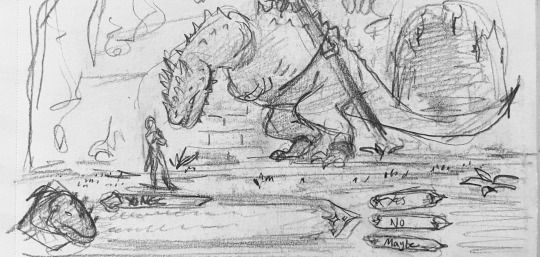

To this. (And come to think of it I might actually still want to make those cooler looking buttons in my sketch) 4. Break everything out into pieces and individual components. A good UI is made up of building blocks that you can reuse all over the place. That's how it stays consistent and also saves you a lot of stress when you need to go in and update components. Instead of a million different looking UI pieces, you just have to update the one! These individual components will make up your very own UI Component Library, which will be the standardized design system and source of reusable components for your project. This also applies to your visual elements that don't do anything (like I personally have a whole mini library of diamond and star shapes that I reuse everywhere).
For reference, here's a breakdown I made of my Inventory UI. On the right, I've labeled most of the individual components, and you might be able to see how I'm reusing them over and over again in multiple places.
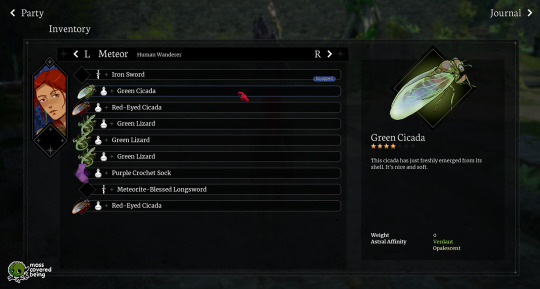
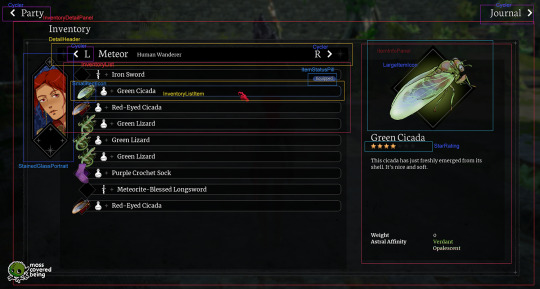
5. Spend some time listening to designers talk, maybe befriend some designers! Many of them have an unique, interesting view of the world and how we interact with it even beyond just software. Their perspectives will inform yours.
6. Test your UI on users whenever you can. Get feedback from others. This is the best way for you to see what works and what doesn't. As game devs we spend so much time with our games it's easy for us to lose sight of the full picture.
7. Be patient and don't give up. Continue to be open to expanding your knowledge. These UI skills take time to develop. I personally am still learning even after like 10 years of doing it. Coming up with the visual elements is very challenging for me and I spend a lot of time rearranging things in photoshop before I actually start coding anything at all in Unreal.
Whew, that was a lot, but I hope that gives you some thoughts and a place to start!
I don't have any posts out there about Blender/Unreal shader workflows right now, but I'll consider making another post sometime soonish. I appreciate you asking and you're welcome! :)
23 notes
·
View notes
Text
Top Mobile App Development Company in New York
In a city that thrives on innovation and technology, businesses in New York are constantly seeking solutions to stay ahead in the digital age. One such solution is a robust, user-friendly mobile app that not only engages customers but also drives growth. Mobcoder, a Top mobile app development company in New York, is here to make that happen.
Read More - https://mobcoderr.blogspot.com/2024/11/top-mobile-app-development-company-in.html

Click here - Top Mobile App Development Company in New York
#hire dedicated flutter app developer#hire dedicated resources in india#hire flutter developers in usa#best mobile app consulting services#mobile application development company in india#best ar app development company in india#it consulting service in india#web app development company in usa#hire mern stack developers#ui/ux designing company usa
0 notes
Note
did you go to school for UI/UX design? i've always been interested but i'm not sure where to begin to learn
actually i'm a high school dropout and never really went to school for anything i'm good at—everything i know i learned because i was interested in it from a young age so i naturally sought it out.
i mostly spend a lot of time observing little details in things (software, game design, ui design, whatever really) and asking myself why a particular choice or compromise was made.
important to note that ui/ux design is not strictly about looks, it's about behavior and usability. there's a lot of human psychology and philosphy involved so i suggest looking into that as well!
here's a bunch of resources that taught me a lot, consider these like a solid jumping off point:
gestalt principles
laws of ux
apple's 2017 "designing fluid interfaces" wwdc talk
"the first secret of great design" (ted talk)
the design of everyday things (book)
the art of screenshake (this talk is about "juice" in games but can apply to almost anything)
remember that talent is simply pursued interest
11 notes
·
View notes
Text

For a digital-only, cloud-based PlayStation 7, here’s an updated schematic focusing on next-gen cloud gaming, AI-driven performance, and minimalistic hardware:
1. Hardware Architecture (Cloud-Optimized, Minimalist Design)
Processing Power:
Cloud-Based AI Compute Servers with Custom Sony Neural Processing Units (NPUs)
Local Ultra-Low Latency Streaming Box (PS7 Cloud Hub) with AI-Assisted Lag Reduction
Storage:
No Internal Game Storage (Everything Runs via PlayStation ZeroCloud)
4TB Cloud-Synced SSD for System & Personal Data

Connectivity:
WiFi 7 & 6G Mobile Support for High-Speed Streaming
Quantum Encrypted Bluetooth 6.0 for Peripherals
Direct-to-Server Ethernet Optimization (AI-Managed Ping Reduction)
Form Factor:
Minimalist Digital Console Hub (Size of a Small Router)
No Disc Drive – Fully Digital & Cloud-Dependent
2. UI/UX Design (AI-Powered Cloud Interface)
NexusOS 1.0 (Cloud-Based AI UI): Personalized Dashboard Adapting to Player Preferences

ZeroNexus AI Assistant:
Predictive Game Recommendations
Smart Latency Optimization for Cloud Gaming
In-Game AI Strategy Coach
Instant Play Anywhere:
Seamless Cloud Save Syncing Across Devices
Playable on Console, PC, Tablet, or NexusPad Companion Device
Holographic UI Options (for AR Integration with Future PlayStation VR)
3. Concept Art & Industrial Design (Minimalist, Streaming-Focused)
Compact, Vertical-Standing Console (PS7 Cloud Hub)
Sleek, Heatless Design (No Heavy Internal Processing)
DualSense 2X Controller:
Cloud-Connected Haptics (Real-Time Adaptive Feedback)
AI-Touchscreen Interface for Quick Actions & Cloud Navigation
Self-Charging Dock (Wireless Power Transfer)
4. Software & Ecosystem (Full Cloud Gaming Integration)
PlayStation ZeroCloud (Sony’s Ultimate Cloud Gaming Service)
No Downloads, No Installs – Instant Play on Any Device
AI-Based 8K Upscaling & Adaptive Frame Rate
Cloud-Powered VR & AR Experiences
Cross-Platform Compatibility: PlayStation 7 Games Playable on PC, TV, & Mobile
Subscription-Based Ownership (Game Library Access Model with NFT Licensing for Exclusive Titles)
Eco-Friendly AI Resource Scaling: Low Power Consumption for Cloud Streaming
This design ensures ultra-fast, high-quality, cloud-first gaming while eliminating hardware limitations. Let me know if you want refinements or additional features!
#chanel#playstation7#deardearestbrands x chanel#deardearestbrands sony playstation7 controller#ps7#PS7#playstation7 controller#deardearestbrands#Chanel x Playstation#playtation7Chanel#chanel textiles
3 notes
·
View notes
Text
#css#scrollbar#editor#generator#resource#tool#code#web#development#design#user#interface#interaction#interactive#ui#ux
1 note
·
View note
Note
Howdy, asked another friend in the games industry for any advice he could give, and he had some stuff that might help you! "I have advice!! But not much more than that (I’m only contract at my current gig) So, out of our small team, there are: 2 Narrative Writers (in a portfolio, show you know how to write) 2 Animators (show you know how to animate) 1 UI/UX Designer (show examples of UI/UX work in games) 2 Background/Character artists (show strong character designs, turnarounds, and backgrounds) So essentially, her best bet is to tailor her portfolio to one of those roles. Our game is in Unity, so understanding how to import animations, character designs, and backgrounds into Unity is a huge leg up. This can be taught on the job, but if she has the time, I’m sure there are resources online! I hope this is helpful at all!!"
(No idea if he was cool with me tagging him here specifically, but he gave me the go-ahead to pass it along, ahaha)
I appreciate this a lot! I feel like I have strong skills in a handful of art directions though and it would be a disservice to me to just have a portfolio for any one type of art. I felt like having specific categories of my work within my portfolio helped avoid that issue so like if I was sending it in for a pixel art position, there's a pixel art tab etc etc.
40 notes
·
View notes
Text
HI, so long time no talk! I haven't gone anywhere, I just had some personal financial troubles that were resolved via...lots of overtime! I am a physicist by day, so that meant I became one by night for a couple months. But I remained coding, designing, & sketching things in my scant moments.
More importantly, I've been doing a lot of reading & observing of the Jcink RPC & I am really gutted by the lack of free resources I've seen become manifest. As a result, I've been percolating some easy design methods I could use to fast track totally free skins to give out as bi-monthly as I can manage in the near future.
Because I'm not one to stick to an aesthetic or design style so much as following a settled philosophy of coding, each of my skins will be entirely unique (no reused assets besides utility scripts, perhaps fonts, etc) but will all be;
Designed to be entirely responsive, with fallback & default setups for Custom Fields, image appearance or omission, etc.
Designed to load in a second & half or under, universally.
Neatened to be readable, cascade-organized, & fully notated with CSS & HTML notes to explain important components, how they work, & how to edit them.
Provided with a dark, light, & middle theme colour option as well as High Contrast option.
Provided with Staff, Member & Character profile & miniprofiles.
Provided with a full Custom BBCode suite of site templates to match the skin.
Based on the UI/UX design of a game with striking visuals that can be used for similar genres.
Now, this is a tall order, but I really want to flex my muscle & try to give folks something to be optimistic over in a landscape of drama-blog wastelanded distress. I want to put out something productive & positive, to make the community better & bring us together a bit <3 As a result, I'm going to need a little help from you all. I need to figure out which "Inspos" to work off of first based on desire for them, to fill the starving niches from most important to "least" so to speak. For the next few weeks, I'll post some polls & would be endlessly grateful if you all paid it forward by boosting but also voting on the games whose vibes you want to see MOST PRESSINGLY manifested as skins in the Jcink RPC.
I will, also, eventually port each one to Forumactivo, so for my Forumactivo folks, please let me know when you get specific polls so I can prioritize converting those skins for you! You deserve just as much love!
Of course, if there's a specific game you want to see feel free to comment on this post & I'll make sure to put it in the first poll, but for now that's all. The first list of inspo options will come out later today or tomorrow, Stay tuned & stay awesome, may the Dance keep you all absolutely blessed!
19 notes
·
View notes